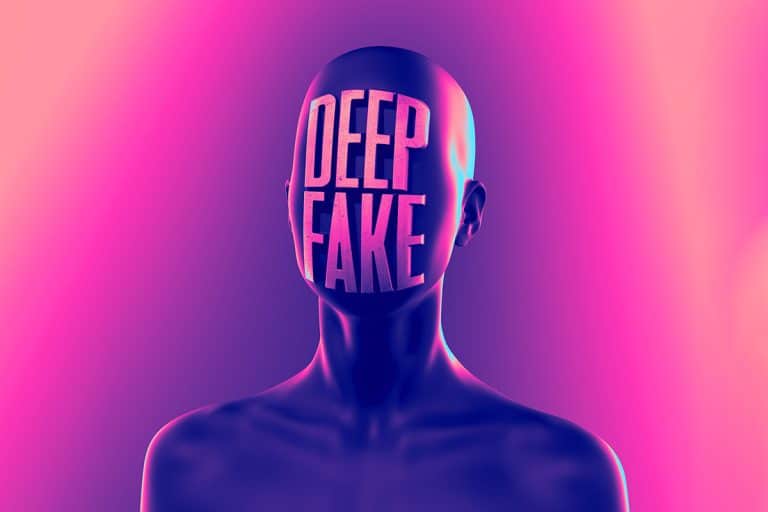People are turning to generative AI and deepfake technology as a means of preserving cherished memories and coping with the death of their loved ones. The advent of these tools has allowed people to recreate digital replicas of the deceased, enabling a virtual reunion of sorts that may offer them some solace – a novel approach to navigate the complexities of grief.
This poses both an advantage and disadvantage when it comes to grieving, experts told Arabian Business, claiming that there is “no right or wrong way to grieve.”
Through machine learning algorithms, generative AI models analyse an extensive database of images and videos to extract patterns and facial features unique to the departed friend or family member. These virtual replicas of the dead can then be programmed to mimic speech, expressions and mannerisms, providing a remarkable resemblance of the person who has passed away.
“What we can be certain of when it comes to grief is that there is no right or wrong way to grieve,” Dr. Vassiliki Simoglou, CDA-licenced psychologist at Thrive Wellbeing Centre in the UAE, told Arabian Business.
According to a framework developed by Swiss-American psychiatrist in 1969, coping with grief normally happens in five stages: denial, anger, bargaining, depression and acceptance. They don’t necessarily happen in this exact order but this is the model that many experts in the field seem to follow.
However, with the prospect of immortalising a passed on loved one with deepfake technology by feeding AI with datasets of memories, images, and videos to create a digital version of them, it brings to question whether this is a healthy coping mechanism.
Experts believe that while it can be helpful during certain phases of grief, it may actually be counterproductive for the denial stage of the grieving process.
“Grief is an internal experience of loss consisting of a highly complex set of thoughts and feelings and is an instinctive human response. While there are stages of grief, we do not experience the stages in a linear manner, nor will we experience all stages or in the same manner as someone else,” Tanya Dharamshi, Counselling Psychologist and Lead Community Services at Lighthouse Arabia’s Raymee Grief Centre in Dubai, told Arabian Business.
“AI may impact the grieving process and prolong the acceptance of the death by providing an alternate reality of the deceased.”
While the use of deepfake tech has raised concerns over potential misuse, particularly when it comes to scams, experts believe that in the realm of grief and healing, these tools can be quite transformative.
Those grappling with the profound pain of loss may be able to find solace and closure, allowing them to hear their voice once more, see their smile, and experience a virtual connection that might ease the ache of absence and offer them a chance to express unfinished conversations or seek closure.
However, as this emerging trend gains momentum in the age of AI, ethical considerations arise.
Grief tech a double-edged sword
Though it might be beneficial, psychologists believe that relying too heavily on AI-generated replicas might impede the natural grieving process and hinder emotional healing. Balancing the potential benefits and drawbacks of such tools is crucial because grief is a deeply personal journey that must be approached with caution and sensitivity.
“Using AI to recreate a deepfake animation or a time-progressed image of the deceased might be helpful for some of the persons left behind – or not,” said Simoglou.
“If they feel that these AI products help them process and deal with their loss, then the use of AI might be considered as a coping mechanism.”
Simoglou said she would recommend the use of AI for grief therapy, but only after the person has “fully acknowledged and accepted their loss, and they are not living in denial.”
Denial is a normal part of the grieving process, she explained.
“When grieving, we might see a person alternate between states of denial and states of acceptance. Deepfakes can cause a person to act or feel as the deceased is still there, thus feed into the state of denial and have the potential to keep the grieving person stuck there,” she added.
“Healing and reinvesting life with the living comes from acceptance of loss.”
According to Dharamshi, AI could potentially support as a way of memorialising and remembering the deceased but she warned that more empirically controlled studies need to be conducted to outline how this might impact the grieving process.
“As human species, we need positive meaningful relationships,” said Dharamshi.
“AI only provides what we feed it – our version of the memories, thoughts and images. It can be useful for those of us who need to gain closure through expression of held emotions and therefore used as a traditional tool for interim coping.”
Dharamshi explained that using such tools for interim coping should be used with the intention of ensuring the person grieving eventually comes to a place of acceptance.
AI and the future of grief therapy
As generative AI and deepfake technology continue to evolve and seep their way into the mainstream in all areas of life, the power of these tools to reshape the grieving process cannot be understated, making way for new use cases in grief therapy.
Simoglou suggested that AI-generated time-progressed images of deceased youth might be a new use case in the field of grief therapy.
“Being able to see what a person would look like had they gotten the chance to grow old, deepfake animations or metaverse characters, seem like different applications of AI to grief.
“As technology becomes more prevalent in all fields, recreated images of deceased individuals might feel less and less uncanny. They might become a way to keep alive an imagined version of the deceased and remain connected to them, and although not tangible, that recreation might feel soothing and comforting.”
Although this seems like an easy way to bring someone back from the dead, Dharamshi said that creating AI avatars of deceased persons by using images and videos of their personal and private memories without their consent raises privacy and ethical concerns.
“Use compassion and kindness. Loss can be incredible, and impacts us all differently,” she said.
“Be gentle with yourself. Understand that there will be emotional physical, cognitive, behavioural, spiritual changes. Give yourself permission to feel all that shows up and seek safe support. Talk about your loved one, share stories with family and those grieving and partaking in mourning rituals can all be incredibly impactful in the grief process.”
Simoglou agreed, advising people to let their emotions “flow freely” without trying to censor them.
“The more an emotion is suppressed, the more it craves recognition and it aggravates. Talk about the deceased as frequently as you need to, find ways to keep their memory alive, give yourself time to reflect on your loss and be patient, and keep up with your self-care and exercise routine.
“Grief becomes an expansive experience where the person learns to live with their loss.”






